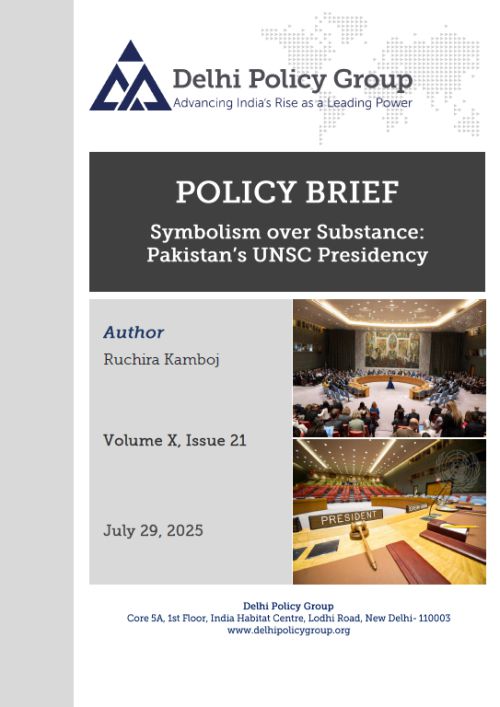Symbolism over Substance: Pakistan’s UNSC Presidency
The United Nations Security Council (UNSC) Presidency rotates monthly among its fifteen members, following the English alphabetical order. For non-permanent UNSC members, this institutionalised procedural mechanism allows each Council member to wield the gavel at least once during their tenure.
The Presidency offers some visibility, influence, and soft power. The incumbent frames the narrative, sets the agenda, and raises matters of concern, effectively serving as the Council’s face for the month. However, the President cannot unilaterally drive or impose policy; that prerogative rests with the Council collectively, particularly its veto-wielding permanent members.
Pakistan's turn in July featured three significant events, with a debate on July 22 serving as the centrepiece. Framed within the framework of multilateralism, peaceful dispute settlement, and the UN Charter amidst geopolitical divides, the meeting resulted in a generic, largely anodyne resolution. However, it gave Pakistan's Foreign Minister the opportunity to invoke the Kashmir issue in his opening remarks - sufficient to appease domestic lobbies.
A special high-level open debate on Palestine on July 23 secured robust participation, with passionate pleas for an immediate ceasefire and stepped-up humanitarian assistance. Member states called for a two-state solution ahead of the ministerial-level UN conference on the two-state solution, co-chaired by France and Saudi Arabia, which is taking place in New York from July 28-29.
A third event on July 24 highlighted UN-OIC cooperation, serving Pakistan's interest in reinforcing the international status of issues central to the Islamic world, including Palestine and, by association, Kashmir.
The inherent constraints of a UNSC presidency - especially for an elected non-permanent member - are well established. Within these limits, Pakistan aimed less to drive substantive policy shifts than to curate a symbolic moment.
This policy brief explores the above dynamics, reaffirming that the presidency is largely procedural and symbolic in nature. It also highlights the structural rigidity of the Council, which offers limited scope for weilding influence, irrespective of who holds the gavel.



